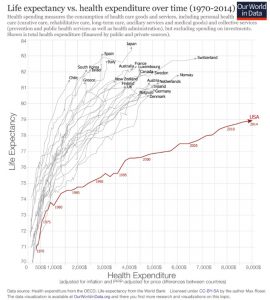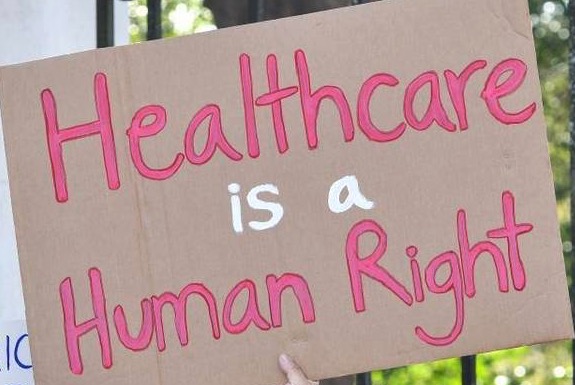How Circumcision Broke the Internet
Mark Joseph Stern writing in Slate has a terrific and sobering review of circumcision data online and how it is horrifically biased with the tinfoil hat crazies.
Stern points out that if you go online and search for facts about circumcision you end up “assaulted by a vitriolic mob of commenters accusing the author of encouraging “genital mutilation.” The self proclaimed anti-circumcision group call themselves “intactivists”. They argue mutilation, human rights, reduction of sexual pleasure (how your foreskin will give you a life of satisfaction and joy), circumcision is equal to female genital mutilation, etc. etc.
The problem with these arguments is that they’re either entirely made up or thoroughly disproven. None of intactivists’ cornerstone beliefs are based in reality or science; rather, they’re founded in lore, devilishly clever sophistry dressed up as logic. The facts about circumcision may be hard to find on an Internet cluttered with casuistry—but they are there. And they prove that even as intactivists dominate the Internet, the real-world, fact-based consensus on circumcision is tipping in the opposite direction.
Take, for example, the key rallying cry of intactivists: That circumcision seriously reduces penis sensitivity and thus sexual pleasure. Study after study after study has proven this notion untrue. Some men circumcised as adults actually report an increase in sensitivity, while many report no appreciable difference; virtually none noted any notable decrease. Men circumcised as adults also almost universally report no adverse effect in overall sexual satisfaction following the procedure. (That fits with what my colleague Emily Bazelon found when she asked readers for their circumcision stories a few years ago.) And genital sensitivity in response to erotic stimulation is identical in circumcised and uncircumcised men. Don’t trust individual studies? Asystematic review of all available data on circumcision came to the same conclusion. Intactivists, then, aren’t disputing a few flimsy studies: They’re contradicting an entire field of research.
The article goes on about how a few have taken control of an important decision. What is striking is how a group with an agenda can dominate the Internet in such a way that good science and evidence based data is difficult or impossible to find by the average parent. And the fact these “intactivists” drive the search results they play off of parents fears at a critical time, pregnancy when clear thinking is not in the forefront of gestation.
Those of us active in healthcare on the Internet will debunk false claims of pharma and tout the benefits of the Sunshine Act and taking pharma out of the HCP’s office but where are we when an anti-circumcision mob is hijacking science and evidence?
Palliative Care and the Human Connection: Ten Steps for What to Say and Do
Diane E. Meier, MD is the Director of the Center to Advance Palliative Care (CAPC). I have recently discovered the above linked video and it is excellent. It speaks to the medical professional but has information that we can all benefit and learn from. It is one of clearest and most compelling discussions on this topic I have seen or read. Of course this is Dr. Meier and she knows her stuff as well as anyone on earth. I cannot recommend this video enough. Just a couple of gems from it:
- 70% of human communication is non-verbal (Donna’s oncologist demonstrated this with his discussion). And to add to that it is part and parcel of what I want to do with the film “Care When There is No Cure“.
- You place the power of how the person wants to receive information in the hands of the patent
The iPhone 5S and 5C
Jon Gruber at Daring Fireball has an excellent and detailed review of the two new phones from Apple and key features including: 64 bit processor, Touch ID, the camera, and more. As usual one of the better tech writers drives a clear and well balanced message. I guess linking to John makes me a bit of fanboy but take a look at Walt Mossberg’s review of the iPhone 5S which ecohs John’s thoughts as well. And Laura Goode reviewed the iPhone 5c.
My question is this how are the Apple Stores going to display and demonstrate Touch ID? I can’t imagine customers coming in and locking all the display phone with their finger pint and leaving. How crazy would that be? Entering a password is old school everyone wants to use their fingerprint.
20 Things 20-Year-Olds Don’t Get
Jason Nazar a contributor at Forbes has a great list of to-do’s for 20 year olds in business. They ring so true as I squint my eyes and look back 30+ years. Right now I am between consulting jobs, trying to identify the next business I want to open, or just throw the towel in. Whatever I figure out shortly is going to be driven by the fact that those of us of certain age are considered old, broken, and expensive. But when you consider someone has to list for 20 year olds how to act and what to do in business it eye opening. It tells me that as someone said “If you think you are getting a bargain hiring a 20 year old just think how much it will cost you to fix their mistakes.”
I don’t want to get into a generational fight here but the reality is that cost savings vs. value is not equivalent. Employers need to see beyond short term gains and look at long term strategies which a 20 year old is lacking just from being 20.
Not Quite Ready for Prime Time: The State Health Insurance Marketplaces and Google
Elaine Swift and David McCormick writing at The Health Blog address an salient issue for success of Obamacare.
Poor search engine results can create serious barriers to shopping and enrollment, the major measures of success for marketplaces and, by extension, the success of the Affordable Care Act (ACA).
Our preliminary findings show that marketplaces for four states—Idaho, Maryland, New Mexico, and New York—and Washington, DC did not appear on the first page of Google results, which generates 92% of all page views. In addition, both unpaid and paid search results for most of the remaining 12 states were frequently absent from page one.
With enrollment in the marketplaces opening October 1 for coverage beginning January 1, this would be a good time to focus on search engine optimization (SEO), the process of increasing the rankings of unpaid or “organic” search results. Once implemented, SEO results can be seen quickly, especially for a topic as popular and important as new health insurance options. However, it requires analysis, planning, and time to implement.
The authors present an excellent table of all unpaid and paid search engine results. And it shows that page 1 results for marketplaces for Idaho, Maryland, New Mexico, New York, and Washington, DC and limited for other state marketplaces.
Their advice, we need to get our act together to improve search results though they readily say it might be too soon since search engine optimization (SEO) may not have started. From my perspective besides making it easy to find we need to have broad discussions online about exchange marketplaces and how to find them what to look for. We need to help the average user improve the find of results so they can get the healthcare insurance they need and want.

